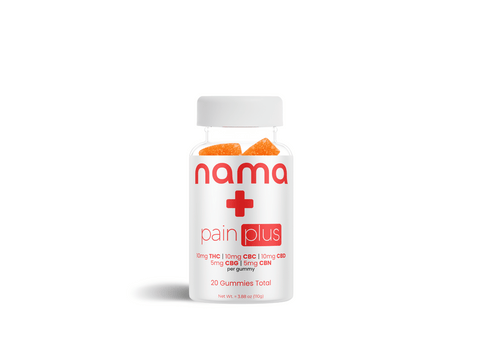The key difference between the marijuana plant and the hemp plant is that the marijuana plant typically has a high level of THC, meanwhile, the hemp plant, pursuant to the 2018 Farm Act, cannot contain more than 0.3% Delta-9 THC. Delta-9 THC is the cannabinoid that most people know as getting you "stoned" or "high" meanwhile the hemp plant contains a higher concentration of CBD which does not have the same psychoactive properties as the marijuana plant.
The Benefits of CBD
Just because CBD doesn't get you high, doesn't mean it isn't useful. Early studies point towards CBD having numerous beneficial properties and this is why CBD has popped up anywhere and everywhere. Let's hear from the experts themselves:
Director of the Addiction Institute at Mount Sinai
“[CBD] doesn’t make you high, but it has effects on multiple other chemicals in the body and in the brain. So, for example, in the brain, it can elevate chemicals that are important for regulating anxiety and mood."
Released a paper that called CBD oil safe for human use. According to the WHO, “CBD is generally well tolerated with a good safety profile."
Medical director at the Osher Clinical Center for Integrative Medicine at Brigham and Women’s Hospital and assistant clinical professor of medicine at Harvard Medical School
“… the most benefit I have seen as a physician is in treating sleep disorders, anxiety, and pain. Many people report a definite response when it comes to anxiety.”
Psychiatry professor at New York University Langone Health
“Studies so far have shown that CBD of a specific dose is roughly as effective as drugs like Valium and other benzodiazepines in reducing experimental anxiety.”
Professor and interim chair of dermatology at George Washington University
“Cannabinoids, like CBD, are heavily involved in managing the immune response to infection and injury.”
Director of cosmetic and clinical research in the department of dermatology at the Mount Sinai Hospital in New York
“Studies have shown that CBD may actually decrease oil production and be useful in people who are acne-prone.”
How CBD Became Legal
In 2018, the 2018 Farm Act was signed into law. This effectively legalized hemp for industrial production, allowing American farmers to grow hemp as long as it remained under 0.3% Delta 9 THC. This bill effectively legalized other cannabinoids, including CBD, CBG, CBN, and many others both known and unknown.
The Difference Between Hemp Seed Oil and CBD Oil
This is a topic of confusion for many. There is a big difference between these two as one contains high concentrations of CBD and the other contains only trace amounts of CBD. Hemp seed oil is made from the seeds of the hemp plant, similar to olive oil or other standard oils you may find in your cabinet. Meanwhile, CBD oil is typically extracted from the hemp plant itself and contains numerous cannabinoids including CBD.
Buyer beware, when you see those items on Amazon selling insane levels of hemp, that is a key sign they are talking about hemp seed oil and not CBD oil. Also, as of the publishing of this article, Amazon prohibits the sale of hemp derived CBD on its platform. Yes, some companies may be skirting the law and breaking the rules, but the majority of products on Amazon currently, do not contain CBD oil.
Types of CBD Oil
There are three primary forms of CBD oil used to make hemp derived CBD products. These forms include, full spectrum, broad spectrum and isolate.
Let's break each down.
- Full Spectrum - is not processed to remove any THC, therefore, full spectrum extract contains all the cannabinoids including 0.3% THC (in compliance with the 2018 Farm Act)
- Broad Spectrum - put simply, the same as full spectrum, except that the THC has been removed, thus broad spectrum contains all the additional minor cannabinoids
- Isolate - is the purest form of CBD in that it only contains CBD and does not contain additional minor cannabinoids
Forms of Consumption
The four major forms of consumption include: topical application, inhalation, ingestion (edibles) and taking CBD sublingual.
- Topical Application
○ Applied on the skin, topical application usually comes in the form of a lotion or salve and some studies suggest topicals containing CBD may reduce pain and inflammation in the joints.
- Inhalation
○ Typically through smoking or vaping, inhalation is one of the quickest forms of consumption. In combusting the flower or concentrated oil, CBD gets right into your bloodstream for an immediate "stronger" effect. However, due to the harms associated with smoking, we advise towards ingesting through safer methods such as real fruit filled gummies.
- Ingestion (edibles)
○ Ingestion is a growing form of consumption. CBD offerings have expanded in this realm, offering products ranging from softgels, to chocolate bars to broad spectrum gummies. Ingested through this form of consumption, the CBD may take up to two hours for the effects to start setting in and are more gradual and longer lasting than most forms of consumption. However, here at nama we utilize a proprietary nano infusion which allows our gummies to be felt in only 30 minutes.
- Sublingual
○ Taking CBD sublingually via a tincture (also known as a dropper), is another form of consumption. Hemp extract is usually infused into hemp seed oil or MCT oil and filled into a tincture. Consumers can then take a few drops or an entire dropper directly under the tongue and hold it there for at least 30 seconds for full effect.
For a deeper dive into popular forms of consumption and the pros and cons of each, check out our article on the four most popular consumption mechanisms.




![Buzz Packs™ [THC and CBD Powder Drink Mix]](http://www.namacbd.com/cdn/shop/files/nama_buzz_packs_thc_drink_pack_white_background.png?v=1741884660&width=480)
![Buzz Packs™ [THC and CBD Powder Drink Mix]](http://www.namacbd.com/cdn/shop/files/Buzz_Packs_Label.png?v=1741884660&width=480)




![Buzz Drops™ [THC Drink Drops]](http://www.namacbd.com/cdn/shop/files/nama_thc_buzz_drops.png?v=1711412866&width=480)
![Buzz Drops™ [THC Drink Drops]](http://www.namacbd.com/cdn/shop/files/buzz-drop-wine-comparison.png?v=1736882023&width=480)







Comments (0)
There are no comments for this article. Be the first one to leave a message!